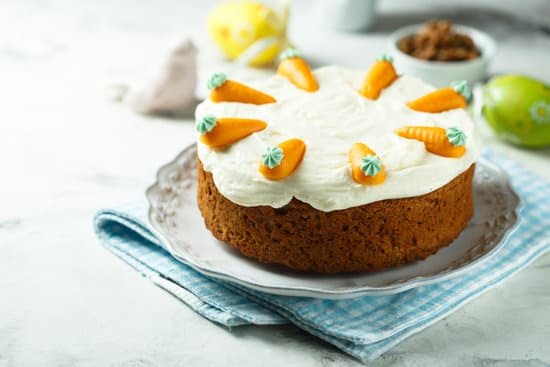Candied fruit cake decorations have become a beloved tradition during the holiday season, adding a touch of sweetness and festive flair to baked treats. Whether you’re decorating a classic fruitcake or experimenting with other dessert creations, these vibrant and delicious decorations are sure to impress both visually and taste-wise.
In this article, we will explore the history, creativity, science, and practicality behind candied fruit cake decorations, providing you with all the information you need to elevate your holiday baking game.
For centuries, candied fruit has been used as a decorative element in desserts across various cultures. The practice of candying fruits originated as a way to preserve fruits year-round before the advent of refrigeration.
Today, it has evolved into an art form that beautifully showcases the natural colors and flavors of fruits while adding an irresistible sugary coating. From traditional red and green cherries to citrus peels and exotic fruits like kumquats, there is a wide array of options available to suit every baker’s taste and aesthetic preferences.
One of the most delightful aspects of using candied fruit cake decorations is the opportunity they provide for creativity. With so many different types of candied fruits available – each with its unique texture, flavor profile, and visual appeal – bakers can explore endless possibilities when it comes to designing their cakes.
Whether you prefer a simple arrangement or want to create intricate patterns and designs, incorporating candied fruit into your baking allows you to showcase your artistic flair while tantalizing taste buds at the same time.
In the following sections of this article, we will dive deeper into the history behind candied fruit cake decorations, discussing their origins and cultural significance. We will also delve into the science behind how fruit is candied to achieve that perfect texture and taste. Additionally, we’ll share step-by-step guides for making your own candied fruit from scratch and explore various techniques for using these colorful decorations on cakes in innovative ways.
Finally, we’ll provide tips for keeping your candied fruit cake decorations fresh and guide you on where to find the best options for your baking needs. So let’s get started on this delectable journey of elevating your holiday baking with exquisite candied fruit cake decorations.
The History of Candied Fruit Cake Decorations
The history of candied fruit cake decorations is a fascinating journey that spans centuries and cultures. The tradition of preserving fruit in sugar syrup can be traced back to ancient times, with records showing that the Egyptians and Romans both enjoyed this sweet treat. However, it was during the medieval period that the practice of candying fruit really took off.
In medieval Europe, sugar was a luxurious ingredient that was only available to the wealthy. This meant that candied fruit became a symbol of wealth and status, often reserved for special occasions and holidays. The process of candying fruit involved simmering fruit in a sugar syrup until it reached a crystallized state, which not only preserved the fruit but also gave it a delightful sweet taste.
Candied fruit cake decorations became especially popular during the holiday season, with families using them to adorn their Christmas cakes and other festive desserts. The brightly colored candied fruits added a touch of elegance and celebration to these special treats.
Throughout history, different cultures have put their own spin on candied fruit cake decorations. In Italy, for example, candied citron peel is a traditional ingredient in panettone, while in Germany, stollen is adorned with dried fruits like raisins, cherries, and citrus peel. Each culture has its own unique flavor combinations and techniques for preparing these delicious decorations.
Overall, the history of candied fruit cake decorations is rich and varied, reflecting the diverse traditions and tastes of different cultures throughout time. Today, these sweet treats continue to be an important part of holiday baking around the world, bringing joy and delight to tables everywhere.
| Country | Traditional Candied Fruit Cake Decoration |
|---|---|
| Italy | Panettone – Candied citron peel |
| Germany | Stollen – Dried fruits like raisins, cherries, and citrus peel |
| France | Bûche de Noël – Candied chestnuts and marrons glacés (candied chestnuts) |
| England | Christmas Cake – Candied cherries, pineapple, and mixed peel |
Unleashing Your Creativity
When it comes to decorating cakes, the options are endless. One of the most versatile and visually appealing options is using candied fruit as decorations. Candied fruit cake decorations not only add a pop of color and texture to your baked goods but also bring a burst of flavor that can take your creations to a whole new level. In this section, we will explore different types of candied fruit cake decorations, each offering a unique twist to your confections.
Candied Citrus Slices
One popular type of candied fruit decoration is candied citrus slices. These vibrant and tangy additions are perfect for both flavor and aesthetics. Whether you choose orange, lemon, lime, or grapefruit slices, these candied treats add a refreshing zing to any cake. Soaking the citrus slices in a sugar syrup before baking helps preserve their shape and intensify their flavors, making them an ideal choice for garnishing cakes with a citrus-themed flavor profile.
Fruit Peel Ribbons
If you want to add a touch of elegance and sophistication to your cakes, consider using candied fruit peel ribbons as decorations. Fruit peel ribbons are made by peeling long strips of fruits such as oranges or lemons and then candying them in sugar syrup. The result is thin ribbons that can be shaped into intricate designs or simply draped over the cake for an effortless yet stunning effect.
Fruity Gems
For those looking for something more luxurious and jewel-like, try using small pieces of candied fruit as edible gems on your cakes. These bite-sized fruit pieces add a burst of color alongside their natural sweetness. Raspberries, cherries, and blueberries are just some examples of fruits that can be transformed into delightful fruity gems through the candying process. They make perfect accents for cupcakes or petite cakes, creating an eye-catching display that is sure to impress.
With so many options to choose from, unleashing your creativity with different types of candied fruit cake decorations can truly elevate your baking projects. Whether you decide to use candied citrus slices, fruit peel ribbons, or fruity gems, each type brings its own unique flavor and visual appeal. So go ahead and experiment with these delightful decorations to create stunning cakes that are as beautiful as they are delicious.
The Science Behind Candying Fruit
The Process of Candying Fruit
Candying fruit is a simple yet fascinating process that transforms ordinary fruits into vibrant and flavorful treats. The process involves coating the fruit in a sugar syrup, which helps to preserve it and give it a chewy texture. To achieve the perfect texture and taste when candying fruit, it is important to understand the science behind this technique.
Choosing the Right Fruit
Not all fruits are suitable for candying. Softer fruits like berries may not hold their shape well during the process, while firmer fruits like citrus, pineapple, and cherries are ideal choices. These fruits have a lower water content and can withstand the heat of the sugar syrup without becoming too mushy.
The Role of Sugar
Sugar is a key ingredient in candying fruit as it acts as a preservative. When fruit is immersed in a sugar syrup, it creates an environment where bacteria cannot thrive. The high concentration of sugar also causes water to be drawn out of the fruit through osmosis, effectively dehydrating it and creating that characteristic chewy texture.
The Importance of Temperature and Time
The temperature at which you candy your fruit plays a crucial role in achieving the desired texture. By gradually increasing and maintaining the temperature of the sugar syrup, you allow enough time for the sugar molecules to penetrate into the fruit cells while minimizing moisture loss.
The Finishing Touches
Once you’ve achieved that perfect texture, you can enhance the flavor of your candied fruit by rolling them in granulated or powdered sugar. This helps to lock in moisture and prevent them from sticking together.
Candied fruit cake decorations provide a burst of sweetness and vibrant colors to your holiday baking endeavors. Understanding the science behind candying fruit not only allows you to achieve exceptional results but also opens up infinite possibilities for creating unique and delicious treats.
From Scratch
Making your own candied fruit for cake decorations is a rewarding and delicious process. Not only does it allow you to have full control over the taste and quality of the candied fruit, but it also adds a personal touch to your baked goods. In this section, we will provide you with a step-by-step guide on how to make your own candied fruit for cake decorations.
- Choose Your Fruit: Start by selecting the fruits you want to candy. Some popular options include citrus fruits like oranges and lemons, as well as cherries and pineapple. Make sure to choose fruits that are firm and ripe.
- Prepare the Fruit: Wash the fruits thoroughly under running water to remove any dirt or residue. If using citrus fruits, remove the peel using a vegetable peeler or sharp knife, making sure to avoid removing too much of the white pith beneath the peel.
- Blanching: Blanching helps soften the fruit’s texture and remove any bitterness. Bring a pot of water to a boil and add the fruit peels or slices. Let them boil for about 5 minutes, then drain and rinse with cold water.
- Making Simple Syrup: In a saucepan, combine equal parts of water and sugar (e.g., 1 cup of each) to make a simple syrup. Stir over medium heat until the sugar fully dissolves.
- Candying Process: Add the blanched fruit peels or slices to the simple syrup in the saucepan. Make sure they are fully submerged in the syrup. Simmer over low heat for about 1 hour or until the fruits become translucent.
- Drying: Remove the candied fruit from the syrup using a slotted spoon or tongs, allowing any excess syrup to drip off. Place them on a wire rack or parchment paper-lined baking sheet to dry completely overnight.
Once your homemade candied fruit is completely dry, it is ready to be used for cake decorations. You can chop them into smaller pieces, leave them whole, or even dip them in chocolate for an extra indulgent touch. The possibilities are endless, and the vibrant colors and sweet flavors will elevate any cake to a new level of deliciousness.
Table: Homemade Candied Fruit for Cake Decorations
| Fruit | Amount | Sugar | Water | Cooking Time |
|---|---|---|---|---|
| Oranges (peels) | 5 medium-sized oranges | 1 cup | 1 cup | 1 hour |
| Lemons (peels) | 6 large lemons | 1 cup | 1 cup | 50 minutes |
Decorating with Panache
When it comes to using candied fruit as cake decorations, there are countless ways to let your creativity shine. Whether you’re a beginner or an experienced baker, experimenting with different techniques can take your cakes to the next level. Here are some ideas to inspire you:
Fruit Arrangements
One of the simplest yet most elegant ways to use candied fruit on cakes is by arranging them strategically. You can create beautiful patterns or designs using a variety of shapes and colors. Try creating concentric circles, floral motifs, or even spelling out words using the fruit pieces.
Edible Bouquets
Take your cake decorating skills up a notch by transforming candied fruit into edible bouquets. Skewer the fruit pieces onto wooden picks or cocktail sticks and arrange them in a bouquet shape on top of your cake. This technique adds height and dimension to your creation while providing a delightful surprise for your guests.
Inlay Designs
Get creative with inlay designs by embedding candied fruit pieces into the surface of your cake. Cut out patterns or shapes from fondant icing or marzipan, then place the candied fruit inside the cutouts before gently pressing it onto the cake’s surface. This technique creates a stunning effect and allows you to showcase different colors and textures.
Layers and Borders
Add layers of flavor and visual appeal by incorporating candied fruit into fillings or as borders around cake layers. Mix chopped candied fruit into buttercream or cream cheese frosting for added texture and taste. You can also use whole or sliced candied fruits as border decoration between each layer of cake.
Remember, these techniques are just starting points; feel free to adapt them or come up with your own unique ideas. The key is to have fun and let your imagination run wild.
Overall, using candied fruit as cake decorations can take your baking skills to new heights. From simple patterns to intricate designs, there are countless ways to showcase the beauty and taste of candied fruits on cakes. So, go ahead and unleash your creativity in decorating with panache.
Beyond the Fruitcake
Candied fruitcake decorations are often associated with the holiday season, but their versatility extends far beyond fruitcakes. If you’re looking to add a touch of sweetness and color to your baked goods, consider exploring unique and unexpected uses for candied fruit decorations. Here are some ideas to get you started:
- Cupcakes: Transform plain cupcakes into delightful treats by adorning them with candied fruit decorations. Arrange slices of candied citrus or cherries on top of frosted cupcakes for an elegant and festive touch. You can also finely chop candied fruit and mix it into the cupcake batter for a burst of flavor in every bite.
- Quick Breads: Take your loaves and muffins to the next level by incorporating candied fruit decorations into the recipe. Whether it’s a classic banana bread or a zesty lemon loaf, adding bits of candied fruit will infuse your baked goods with sweetness and texture. Consider using different types of candied fruits such as pineapple, ginger, or papaya for variety.
- Cookies: Spruce up your cookies with eye-catching candy-coated fruits. Rolled sugar cookies can be decorated with small pieces or whole slices of candied fruit before baking for a beautiful presentation. For thumbprint or sandwich cookies, place a dollop of jam or frosting in the center and top it off with a piece of candied fruit.
To achieve stunning results when using candied fruit decorations in your baking, it’s important to choose high-quality products that retain their vibrant colors and flavors. Look for brands that use natural ingredients and have a reputation for producing superior products.
Tips and Tricks for Keeping Your Candied Fruit Cake Decorations Fresh and Beautiful
Candied fruit cake decorations add a touch of elegance and sweetness to any holiday baking creation. However, it is important to know how to properly preserve these delightful decorations in order to keep them fresh and beautiful. With a few tips and tricks, you can ensure that your candied fruit cake decorations remain vibrant and ready to adorn your cakes.
One important tip for keeping your candied fruit cake decorations fresh is proper storage. It is best to store them in an airtight container or resealable bag in a cool, dry place. This will help prevent moisture from causing the decorations to become sticky or lose their texture. Additionally, storing the decorations away from direct sunlight will help maintain their vibrant colors.
Another trick for preserving the beauty of your candied fruit cake decorations is to handle them with care. These delicate adornments should be gently placed on top of the cake or secured using icing or frosting. Avoid touching them excessively with bare hands, as this can transfer oils and potentially cause the colors to fade or rub off.
In addition to proper storage and handling techniques, it is also recommended to use fresh candied fruit cake decorations within a reasonable time frame. While these decorations have a long shelf life, it is best to use them within six months of purchase for optimal freshness and taste.
By following these tips and tricks, you can ensure that your candied fruit cake decorations stay fresh and beautiful throughout the holiday season. Whether you are making a traditional fruitcake or experimenting with new cake designs, these delightful adornments will surely add a touch of festive flair to your creations.
Shop Till You Drop
When it comes to finding the best candied fruit cake decorations for your baking needs, there are several options available to you. Whether you prefer the convenience of online shopping or enjoy wandering through specialty stores, there are plenty of places where you can find the perfect candied fruit to elevate your cakes to the next level.
One option for purchasing candied fruit cake decorations is through online retailers. Many online stores offer a wide variety of flavors and colors of candied fruits, allowing you to easily find exactly what you need for your baking project. Additionally, online shopping provides the convenience of having the products delivered directly to your door, saving you time and effort.
If you prefer a more hands-on approach and want to see the different options in person, specialty food stores or gourmet markets may be the ideal place for you to shop. These types of stores often carry a selection of high-quality candied fruit that will add a touch of elegance and flavor to your cakes. The advantage of shopping in-store is that you can inspect and sample different varieties before making your final selection.
Finally, if you enjoy supporting local businesses and want to find unique candied fruit cake decorations, farmers markets and artisanal shops are great places to explore. These venues often have vendors who make their own candied fruits using traditional methods, resulting in a truly authentic taste and texture. Additionally, buying from local producers supports sustainable agriculture practices and helps stimulate the local economy.
Conclusion
In conclusion, incorporating candied fruit cake decorations into your holiday baking is a surefire way to elevate your creations and impress your friends and family. The deep-rooted history of this delicious tradition adds a touch of nostalgia to your treats, reminding us of the joy and warmth that comes with the holiday season.
Not only do candied fruit cake decorations allow you to unleash your creativity, but they also provide a feast for the senses. From the perfect texture achieved through the science of candying fruit to the vibrant colors that adorn your cakes, these decorations not only enhance the visual appeal but also add layers of flavor to your baked goods.
Creating your own candied fruit may seem daunting, but with our step-by-step guide, you can make your own unique creations that will leave a lasting impression. And when it comes to decorating with panache, there are endless possibilities. Whether you choose to showcase a simple yet elegant design or explore intricate techniques, using candied fruit as a decorative element guarantees a showstopper.
Furthermore, don’t limit yourself to just fruitcake. Explore unexpected uses for these delightful decorations, such as topping off pies, ice cream sundaes, or even cocktails. The versatility of candied fruit allows you to experiment and delight in new flavors and combinations that will surprise and excite your taste buds.
To ensure that your candied fruit cake decorations stay fresh and beautiful for longer periods, we have compiled tips and tricks that will help preserve their quality. By following these guidelines, you can continue to enjoy the beauty and taste of these exquisite decorations throughout the holiday season and beyond.
Lastly, finding high-quality candied fruit cake decorations is essential. Look for reputable stores or online sources that offer a variety of options to suit your specific needs. Whether you prefer classic combinations or experimental flavors, selecting the best ingredients will guarantee outstanding results in both taste and appearance.
Frequently Asked Questions
How do you decorate a fruitcake?
Decorating a fruitcake can be done in various ways to add visual appeal and enhance its taste. One popular method is to glaze the cake with a thin layer of apricot or strawberry jam, which not only gives it a glossy finish but also helps to retain moisture. Edible decorations like candied fruit slices, chopped nuts, or even edible flowers can be arranged on top of the glaze.
Another option is to cover the entire cake with marzipan or fondant icing and use icing pens or food coloring to create elaborate designs or patterns. Some people also opt for a simple dusting of powdered sugar for a more subtle yet elegant decoration.
How do you decorate a cake with dried fruit?
Decorating a cake with dried fruit can provide both aesthetic value and additional flavor. First, the cake needs to be covered with a layer of frosting, such as buttercream or cream cheese frosting, which acts as an adhesive for the decorations. Dried fruits like cranberries, apricots, cherries, or raisins can then be strategically placed on top of the frosting.
These fruits can either be left whole or sliced into smaller pieces depending on personal preference and design choice. For an added touch, some decorators brush the dried fruit lightly with a sugar syrup or honey mixture to give them a glossy appearance and ensure they stay in place.
Can you decorate a cake with fruit the day before?
Yes, it is possible to decorate a cake with fresh fruit the day before serving it. However, there are some factors that need to be considered when doing so. The type of fruit being used plays a crucial role as some fruits tend to release juices over time which could potentially affect the texture and appearance of the cake’s frosting. It is advisable to choose sturdy fruits that are less likely to wilt quickly such as berries, kiwi slices, or citrus segments.
Before decorating, make sure the fruits are thoroughly dry so that they do not introduce excess moisture onto the cake’s surface overnight which could lead to sogginess. To ensure the fruit remains fresh, store the decorated cake in the refrigerator overnight and cover it loosely with plastic wrap or place it in a cake container. It’s worth noting that some fruits, like bananas or apples, tend to brown when exposed to air for extended periods of time, so consider spraying them with lemon juice to help prevent discoloration.

Welcome to our cake decorating blog! My name is Destiny Flores, and I am the proud owner of a cake decorating business named Cake Karma. Our mission is to provide delicious, beautiful cakes for all occasions. We specialize in creating custom cakes that are tailored specifically to each customer’s individual needs and tastes.





